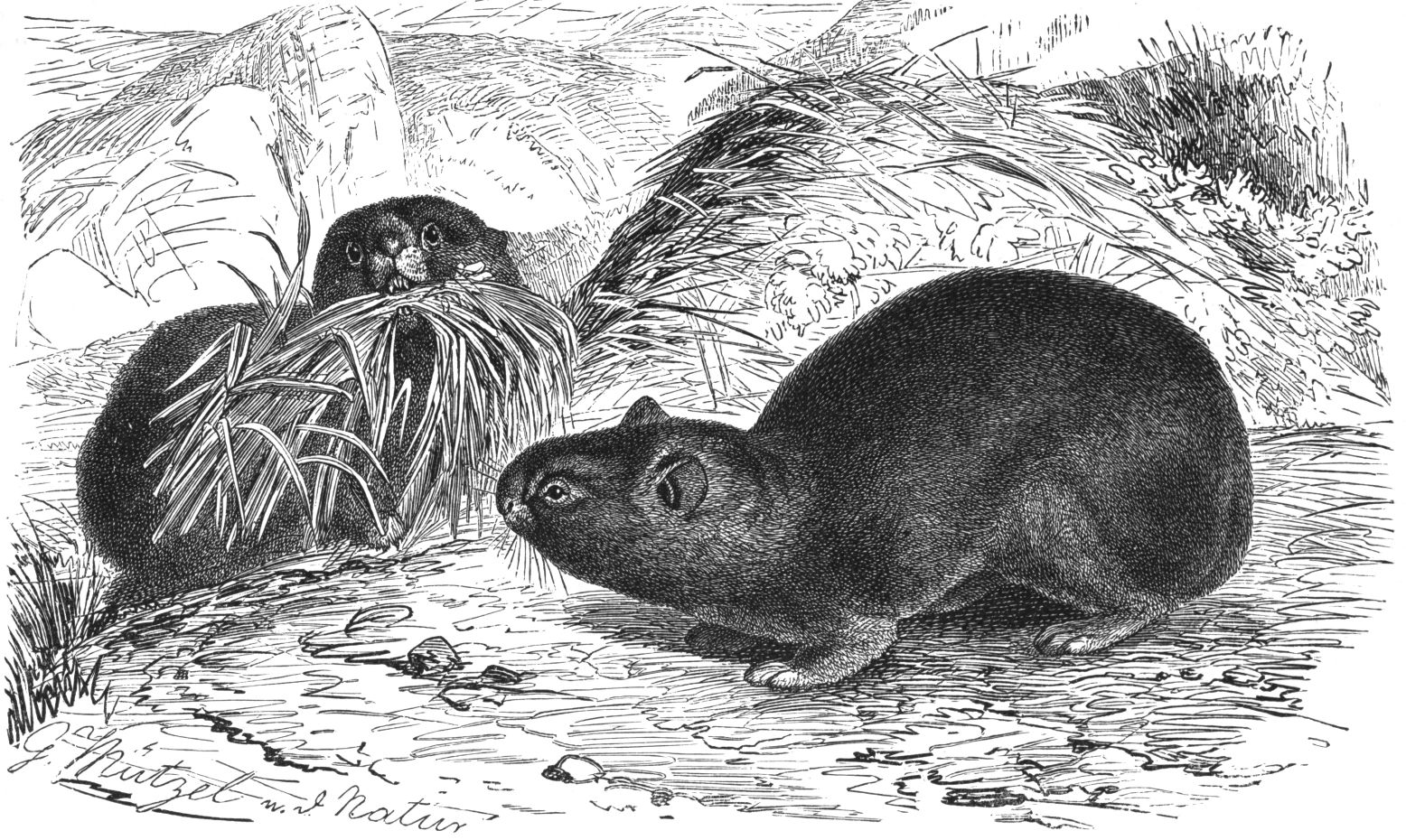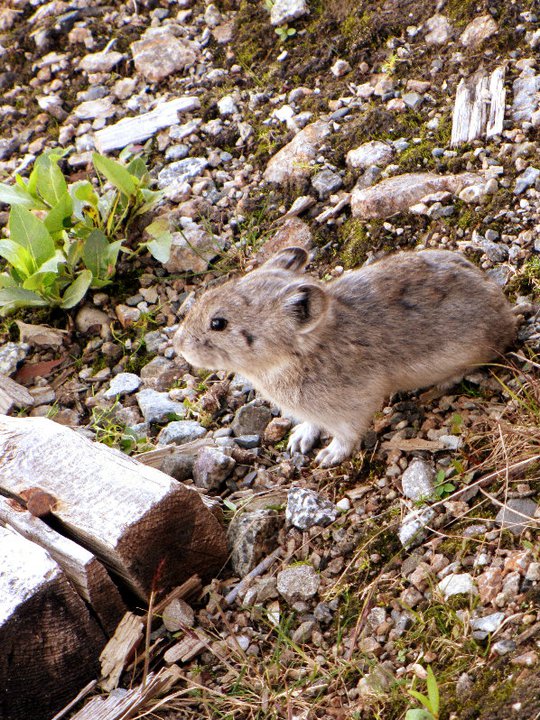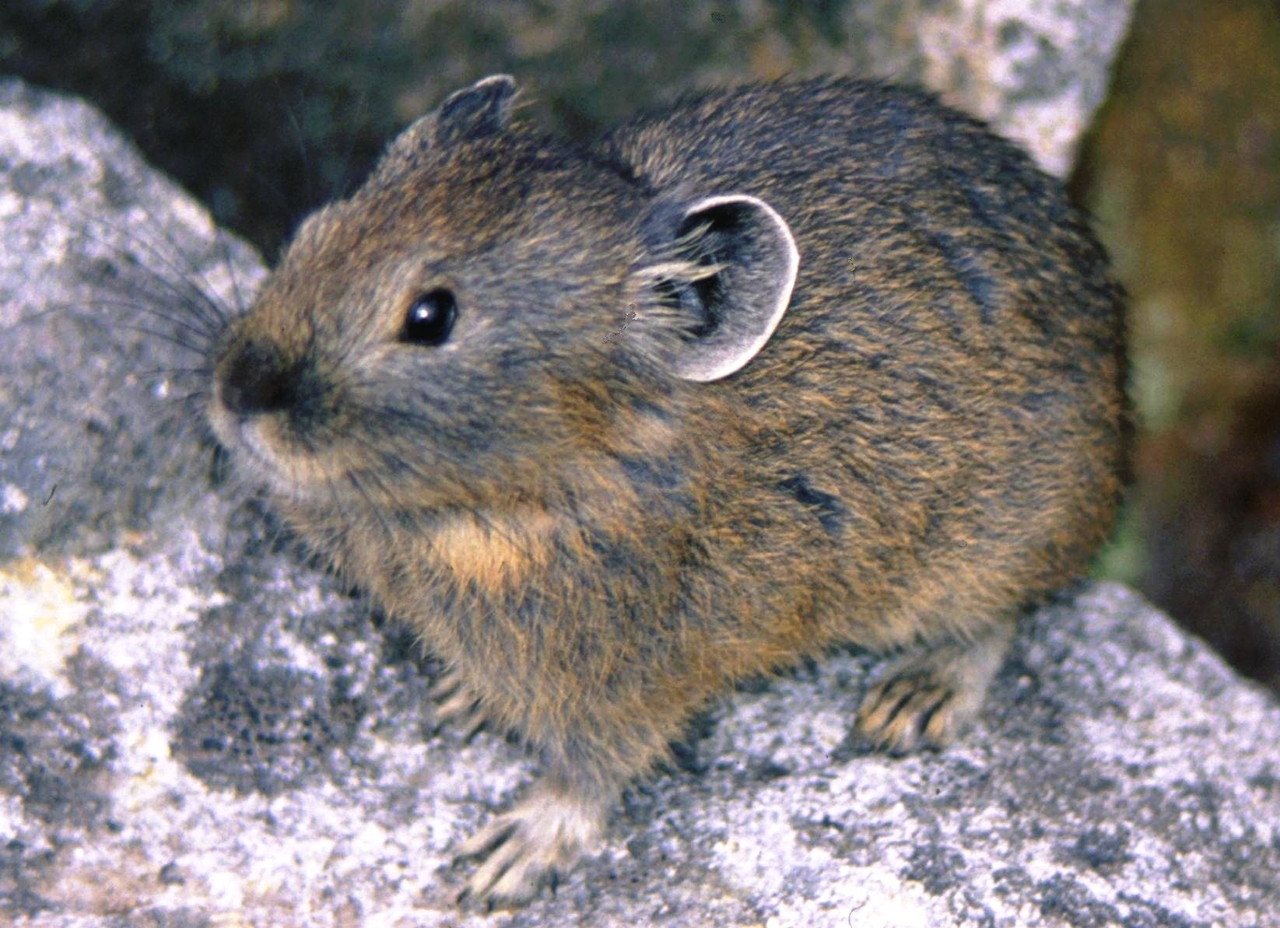|
Alpine Pika
The alpine pika (''Ochotona alpina'') is a species of small mammal in the pika family, Ochotonidae. The summer pelage of different subspecies varies drastically but, in general, it is dark or cinnamon brown, turning to grey with a yellowish tinge during the winter. The alpine pika is found in western Mongolia, eastern Kazakhstan, and Russia (Tuva, Irkutsk, Altai, and Krasnoyarsk), as well as in China (northern Xinjiang and Heilongjiang), in very cold, mountainous regions. It is a generalist herbivore, and mainly forages on mosses, tree branches, pine nuts, and plant stems. It can emit three series of different vocalizations: a long call, a short call, and an alarm call. It is rated as a species of least concern on the IUCN Red List of Endangered Species. Taxonomy German zoologist and botanist Peter Simon Pallas originally described the alpine pika in 1773, in his work ''Reise durch verschiedene Provinzen des Russischen Reichs''. It is a large species in the pika family, Ochoto ... [...More Info...] [...Related Items...] OR: [Wikipedia] [Google] [Baidu] |
Saylyugem Mountains
Siilhem Mountains (russian: Сайлюгем, ; mn, Сийлхэмийн нуруу, ), or Sailughem, is a mountain range in the southeastern part of Altai Mountains. The range stretches 130 km north-east from 49° N and 86° E towards the western extremity of the Sayan Mountains in 51° 60′ N (sic) and 89° E. Their mean elevation is 1,500 to 1,750 metres (5000 to 5500 feet). The snow-line The climatic snow line is the boundary between a snow-covered and snow-free surface. The actual snow line may adjust seasonally, and be either significantly higher in elevation, or lower. The permanent snow line is the level above which snow wil ... runs at 2,000 m on the northern side and at 2,400 m on the southern, and above it the rugged peaks tower up some 975 metres (3200 feet) more. References Altai Mountains Mountain ranges of Russia Mountain ranges of Mongolia Landforms of Buryatia {{mn-geo-stub ... [...More Info...] [...Related Items...] OR: [Wikipedia] [Google] [Baidu] |
Least Concern
A least-concern species is a species that has been categorized by the International Union for Conservation of Nature (IUCN) as evaluated as not being a focus of species conservation because the specific species is still plentiful in the wild. They do not qualify as threatened, near threatened, or (before 2001) conservation dependent. Species cannot be assigned the "Least Concern" category unless they have had their population status evaluated. That is, adequate information is needed to make a direct, or indirect, assessment of its risk of extinction based on its distribution or population status. Evaluation Since 2001 the category has had the abbreviation "LC", following the IUCN 2001 Categories & Criteria (version 3.1). Before 2001 "least concern" was a subcategory of the "Lower Risk" category and assigned the code "LR/lc" or lc. Around 20% of least concern taxa (3261 of 15636) in the IUCN database still use the code "LR/lc", which indicates they have not been re-evaluate ... [...More Info...] [...Related Items...] OR: [Wikipedia] [Google] [Baidu] |
Morphology (biology)
Morphology is a branch of biology dealing with the study of the form and structure of organisms and their specific structural features. This includes aspects of the outward appearance (shape, structure, colour, pattern, size), i.e. external morphology (or eidonomy), as well as the form and structure of the internal parts like bones and organs, i.e. internal morphology (or anatomy). This is in contrast to physiology, which deals primarily with function. Morphology is a branch of life science dealing with the study of gross structure of an organism or taxon and its component parts. History The etymology of the word "morphology" is from the Ancient Greek (), meaning "form", and (), meaning "word, study, research". While the concept of form in biology, opposed to function, dates back to Aristotle (see Aristotle's biology), the field of morphology was developed by Johann Wolfgang von Goethe (1790) and independently by the German anatomist and physiologist Karl Friedrich Burdach ... [...More Info...] [...Related Items...] OR: [Wikipedia] [Google] [Baidu] |
Collared Pika
The collared pika (''Ochotona collaris'') is a species of mammal in the pika family, Ochotonidae, and part of the order Lagomorpha, which comprises rabbits, hares, and pikas. It is a small (about 160 g) alpine lagomorph that lives in boulder fields of central and southern Alaska (U.S.), and in parts of Canada, including northern British Columbia, Yukon, and western parts of the Northwest Territories. It is closely related to the American pika (''O. princeps''), but it is a monotypic form containing no recognized subspecies. It is asocial, does not hibernate, and spends a large part of its time in the summer collecting vegetation that is stored under rocks ("haypiles") as a supply of food for the winter. Some individuals have been observed collecting and consuming dead birds as sources of fat and protein. Thousands of trips are made during July and August to collect vegetation for winter. Description Appearance The appearance of collared pikas is similar to other members o ... [...More Info...] [...Related Items...] OR: [Wikipedia] [Google] [Baidu] |
American Pika
The American pika (''Ochotona princeps''), a diurnality, diurnal species of pika, is found in the mountains of western North America, usually in boulder fields at or above the tree line. They are herbivorous, smaller relatives of rabbits and hares. Pikas have two different ways of foraging; they either directly consume food or they cache food in piles for the winter (haying). Pikas are vocal, using both calls and songs to warn when predators are nearby and during the Estrous cycle, breeding season. Predators of the pika include eagles, hawks, coyotes, bobcats, foxes, and weasels. Recent studies suggest some populations are declining due to habitat loss and global warming. They generally cannot tolerate temperatures above . Currently the American pika is considered a species of least concern. Description American pikas, known in the 19th century as "little Chief hares", have a small, round, ovate body. Their body lengths range from . Their hind feet range from 25 to 35 mm ... [...More Info...] [...Related Items...] OR: [Wikipedia] [Google] [Baidu] |
Altai Mountains
The Altai Mountains (), also spelled Altay Mountains, are a mountain range in Central Asia, Central and East Asia, where Russia, China, Mongolia and Kazakhstan converge, and where the rivers Irtysh and Ob River, Ob have their headwaters. The massif merges with the Sayan Mountains in the northeast, and gradually becomes lower in the southeast, where it merges into the high plateau of the Gobi Desert. It spans from about 45° to 52° N and from about 84° to 99° E. The region is inhabited by a sparse but ethnically diverse population, including Russian people, Russians, Kazakh people, Kazakhs, Altai people, Altais, Mongol people, Mongols and Volga Germans, though predominantly represented by indigenous ethnic minorities of semi-nomadic stock. The local economy is based on bovine, sheep, horse animal husbandry, husbandry, hunting, agriculture, forestry, and mining. The Altaic languages, Altaic language family takes its name from this mountain range. Etymology and modern names ... [...More Info...] [...Related Items...] OR: [Wikipedia] [Google] [Baidu] |
Sayan Mountains
The Sayan Mountains (russian: Саяны ''Sajany''; mn, Соёны нуруу, ''Soyonï nurû''; otk, 𐰚𐰇𐰏𐰢𐰤, Kögmen) are a mountain range in southern Siberia, Russia (Buryatia, Irkutsk Oblast, Krasnoyarsk Krai, Tuva Republic and Khakassia) and northern Mongolia. In the past, it served as the border between Mongolia and Russia. The Sayan Mountains' towering peaks and cool lakes southwest of Tuva give rise to the tributaries that merge to become one of Siberia's major rivers, the Yenisei River, which flows north over 3,400 kilometres (2000 mi) to the Arctic Ocean. This is a protected and isolated area, having been kept closed by the Soviet Union since 1944. Geography Western Sayan At 92°E the Western Sayan system is pierced by the Ulug-Khem (russian: Улуг-Хем) or Upper Yenisei River, and at 106°, at its eastern extremity, it terminates above the depression of the Selenga-Orkhon Valley. It stretches almost at a right angle to the Western Sayan fo ... [...More Info...] [...Related Items...] OR: [Wikipedia] [Google] [Baidu] |
Glaciation
A glacial period (alternatively glacial or glaciation) is an interval of time (thousands of years) within an ice age that is marked by colder temperatures and glacier advances. Interglacials, on the other hand, are periods of warmer climate between glacial periods. The Last Glacial Period ended about 15,000 years ago. The Holocene is the current interglacial. A time with no glaciers on Earth is considered a greenhouse climate state. Quaternary Period Within the Quaternary, which started about 2.6 million years before present, there have been a number of glacials and interglacials. At least eight glacial cycles have occurred in the last 740,000 years alone. Penultimate Glacial Period The Penultimate Glacial Period (PGP) is the glacial period that occurred before the Last Glacial Period. It began about 194,000 years ago and ended 135,000 years ago, with the beginning of the Eemian interglacial. Last Glacial Period The last glacial period was the most recent glacial period ... [...More Info...] [...Related Items...] OR: [Wikipedia] [Google] [Baidu] |
Khangai Mountains
The Khangai Mountains ( mn, Хангайн нуруу, Hangain nuruu, ); form a mountain range, range in central Mongolia, some west of Ulaanbaatar. Name Two provinces of Mongolia are named after the Khangai mountains: Arkhangai (North Khangai) and Ovorkhangai (South Khangai). The mild climate area where the two provinces meet (in eastern Khangai) is known as the cradle of Mongolian and nomadic civilization. The plains at the foot of the eastern Khangai host the Orkhon Valley, Orkhon Valley World Heritage Site. The Xiongnu capital Luut Khot (Lungcheng), the Xianbei state, Xianbei capital Ordo and the Rouran capital Moomt (Mume) are said to have been located there. Later empires also established their capitals there: e.g. the Uyghur Khaganate (745–840) built their capital Ordu-Baliq in the region. Features The tallest mountain is Otgontenger ( "Youngest sky"), which is about 4,000 metres tall. It is revered by the Mongols and state ceremonies are held there. Suvraga Khairkha ... [...More Info...] [...Related Items...] OR: [Wikipedia] [Google] [Baidu] |
Khentii Mountains
The Khentii Mountains ( mn, Хэнтийн нуруу) are a mountain range in the Töv and Khentii Provinces in North Eastern Mongolia. Geography The mountain chain overlaps the Khan Khentii Strictly Protected Area and includes Mongolia's sacred mountain, Burkhan Khaldun, which is associated with the origin of Genghis Khan. The range forms the watershed between the Arctic Ocean (via Lake Baikal) and the Pacific Ocean basins. Rivers originating in the range include the Onon, Kherlen, Menza and Tuul. A northern extension of the Khentii Mountains forms a range of the same name which is part of the Khentei-Daur Highlands in the Transbaikalia Krai of Russia. History The legendary Mongol Genghis Khan is thought to have chosen a resting place in the Khentii Mountains, called the Great Taboo, or Ikh Khorig The Ikh Khorig, or Great Taboo, is a area in the Khentii Aimag (province) of Mongolia, believed by some to be the location of Genghis Khan's grave. It has been carefully gua ... [...More Info...] [...Related Items...] OR: [Wikipedia] [Google] [Baidu] |
Vladimir Sokolov (scientist)
Vladimir Sokolov (1 February 1928 – 19 April 1998) was a Russian scientist in the field of zoology and ecology. He was a member of the USSR Academy of Sciences, Russian Academy of Science and the Brundtland Commission. He was one of the pioneers of the Russian environmentalism movement and one of the early global sustainability advocates. Sokolov was professor and head of the Department of Vertebrate Zoology at the Faculty of Biology at Moscow State University; director of the Institute of Evolutionary Animal Morphology and Ecology at the Russian Academy of Sciences; and deputy chairman of Chemical, Technological and Biological Sciences at the USSR Academy of Sciences. He is the grandfather of Evgeny Lebedev, owner of the London ''Evening Standard'' and ''The Independent'' (with and after his father, Alexander Lebedev, an ex-KGB officer). Life Sokolov was born in Moscow, the son of a zoology professor. He graduated from Moscow State University in 1950 with aspirations to becom ... [...More Info...] [...Related Items...] OR: [Wikipedia] [Google] [Baidu] |
Northern Pika
The northern pika (''Ochotona hyperborea'') is a species of pika found across mountainous regions of northern Asia, from the Ural Mountains to northern Japan and south through Mongolia, Manchuria and northern Korea. An adult northern pika has a body length of , and a tail of . The pika sheds its fur twice annually, bearing a reddish-brown coat in the summer and grayish-brown coat in winter. It feeds on various plant material and makes "hay piles" for winter use. Taxonomy There are several subspecies of this pika: *''Ochotona hyperborea cinereoflava'' *''Ochotona hyperborea coreana'' *''Ochotona hyperborea ferruginea'' *''Ochotona hyperborea mantchurica'' *''Ochotona hyperborea normalis'' *''Ochotona hyperborea uralesis'' *''Ochotona hyperborea yesoensis'' *''Ochotona hyperborea yoshikurai'' Description The northern pika is a small species and grows to a length of between with a tail of . It has small rounded ears and short legs with five toes on each foot and furry soles. The f ... [...More Info...] [...Related Items...] OR: [Wikipedia] [Google] [Baidu] |




_with_a_mouthful_of_flowers.jpg)

.jpg)


